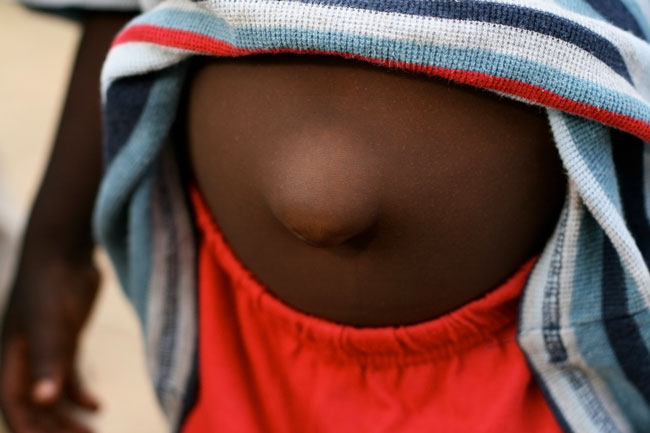By: Henry Chang, MD, FAAP
The umbilical cord delivers all the nutrients babies needs before birth. Once a baby is born it is cut, the outside part of the cord falls off. The skin on the baby heals up and becomes the umbilicus (belly button). In most cases, the muscle around the umbilicus closes up soon after the baby is born.
What is an umbilical hernia?
In about 1 in 5 newborns, the muscle around the belly button doesn’t close. The small opening that remains in the baby’s abdominal wall under the belly button is called an umbilical hernia. Because of this, a portion of intestine can pop out into a hernia sac that is covered only by skin.
How do I know if my child has an umbilical hernia?

The most common sign of an umbilical hernia is a bulging of the belly button. The bulge will typically come and go. It may be large when your child is straining or crying. When your child relaxes, the bulge may go away. At times, the bulge may stretch the skin as the hernia becomes bigger.
Is an umbilical hernia harmful?
Most of the time, umbilical hernias do not cause any problems. In very rare cases, the organs from inside the belly are trapped ("incarcerated") inside the hernia sac. This results in the bulge being present even when your child is calm.
It is even more rare for the organs trapped inside the hernia sac to have their blood flow reduced ("strangulated"). If this happens, your child will likely have severe pain. The belly button may be very sensitive to the touch. The belly button bulge may also be red. Your child may have a fever, throw up, or refuse to eat. If this happens, your child needs to be seen right away. Call your doctor’s office or go to the emergency room.
Will any tests need to be done to see if my child has an umbilical hernia?
Most of the time, your child’s doctor can diagnose an umbilical hernia by examining your child. Rarely, they may order an ultrasound to see if there is a hernia or to see if belly organs are trapped inside the hernia.
An ultrasound is a test used to look at organs underneath the skin and will not hurt your child. A jelly-like liquid will be placed on the belly button and a probe will be used on the skin to see the organs underneath.
How is an umbilical hernia treated?
Most umbilical hernias (about 90%) will close on their own by the time children are 4 years old and nothing needs to be done. The size of the hole in the muscle (and not how far the hernia sticks out) is a better predictor of whether the hernia will close on its own. Since most umbilical hernias do not cause problems, it is safe to wait until your child is closer to 4 years old before thinking about having surgery. Surgery is the only thing that will fix an umbilical hernia if it does not close on its own. Binders and other things done to hold the hernia in do not work and may make the hernia worse or harm the skin.
What problems might my child have from an umbilical hernia?
After surgery, most children do not have problems. Rarely, a hernia can come back and you may see a bulge in the belly button again. If that happens, you will need to see your child’s surgeon again.
More information
About Dr. Chang
 Henry L. Chang, MD, FACS, FAAP, a member of the American Academy of Pediatrics Section on Surgery, is a pediatric general surgeon at the Johns Hopkins All Children's Hospital and Tampa General Hospital in the Tampa-St. Petersburg area in Florida.
Henry L. Chang, MD, FACS, FAAP, a member of the American Academy of Pediatrics Section on Surgery, is a pediatric general surgeon at the Johns Hopkins All Children's Hospital and Tampa General Hospital in the Tampa-St. Petersburg area in Florida.
|